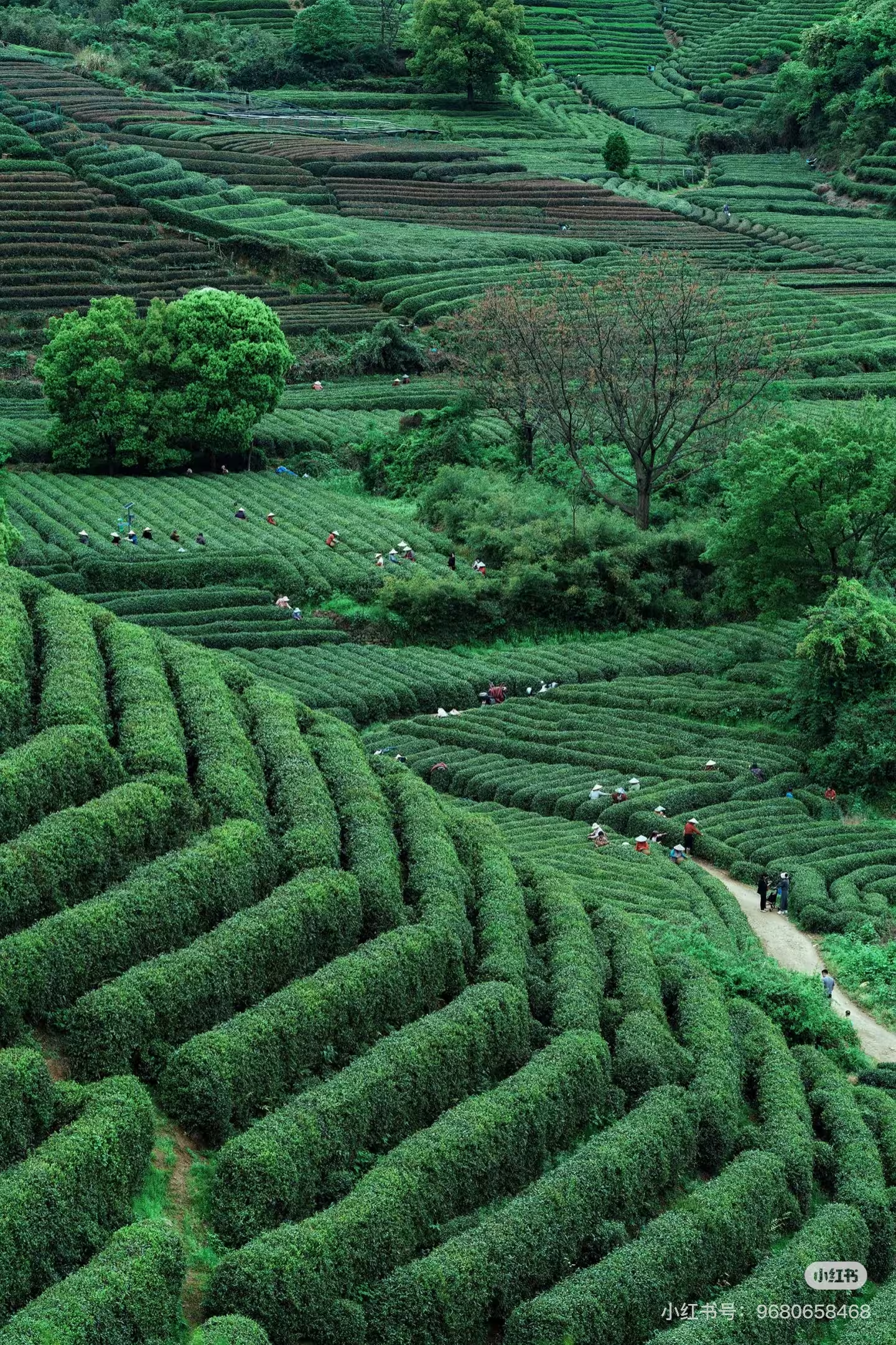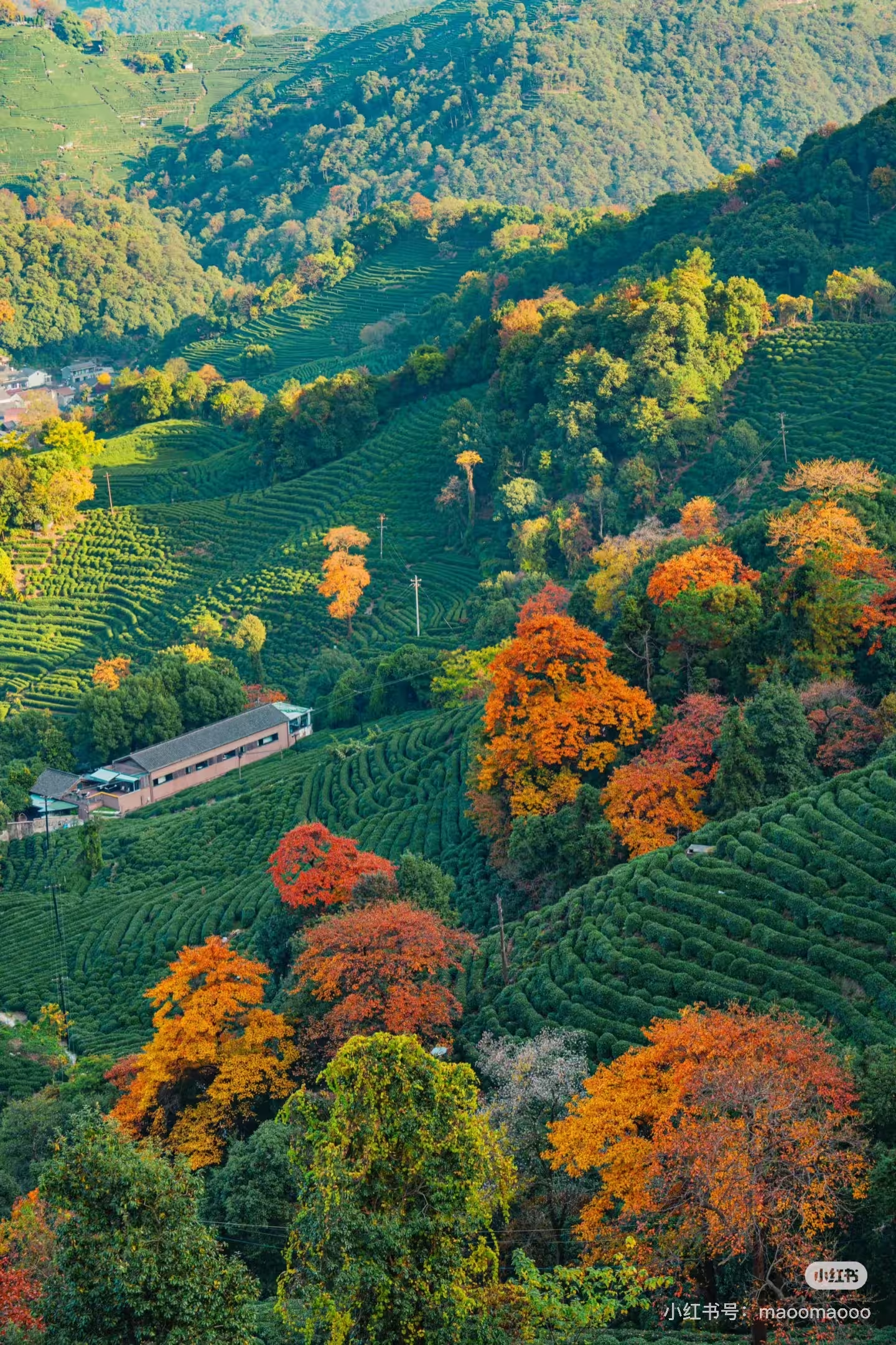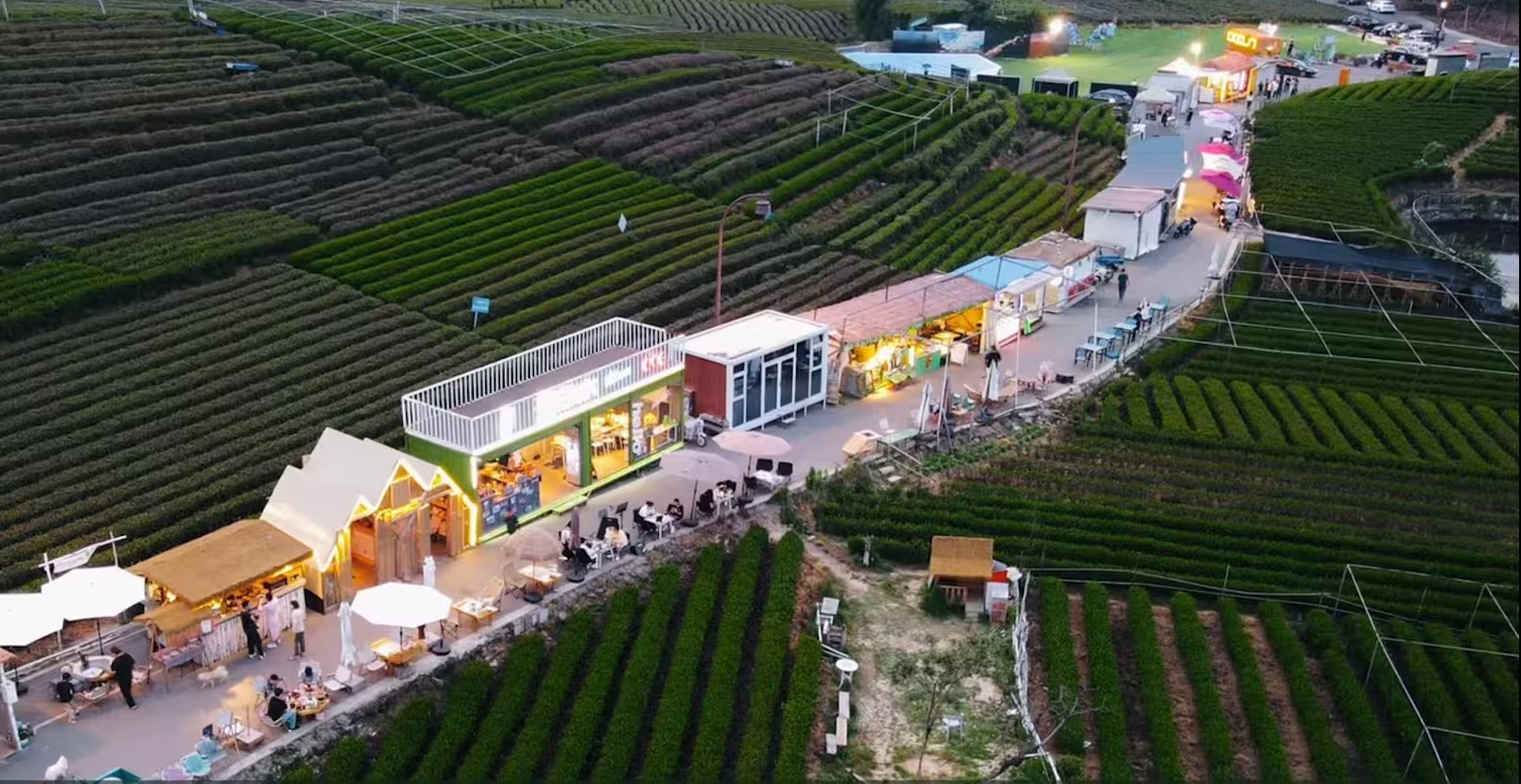Four Seasons in Longwu

Longwu is located in the southwest of Hangzhou, bordered by the West Lake mountains to the east and Wuchaoshan National Forest Park to the west. The tea hills are low and encircled by mountains, forming a trumpet-shaped valley. With over 14,000 mu (about 933 hectares) of tea plantations, Longwu is the largest protected origin area for West Lake Longjing tea.
The surrounding mountains are densely covered with camphor, goldenrain trees, Chinese fir, and moso bamboo. On the flatlands and hills in between, only Longjing tea trees are cultivated. The evergreen vegetation gives Longwu a verdant appearance throughout all four seasons. At the center is the Guangming Temple Reservoir, connected by an L-shaped path that links Hejia Village, the reservoir, and Shangchengdai Village.
Spring is when Longwu is at its most picturesque. Tender tea shoots emerge while gentle breezes brush against your face. Standing atop the tea hills and looking down, one sees a sea of green. Tea pickers, scattered in small groups, add life to the serene landscape. After passing one hill, another stretches ahead with more tea fields. Occasionally, a lone tree stands in the middle—quiet yet poetic.
Spring is also Longwu’s busiest season. Tea pickers from other regions arrive, and tourists from across the country, along with Hangzhou locals, pour in. With only three main roads, the town becomes crowded with vehicles of all sizes. Tea farmers must not only process and sell their tea but also run tea rooms, homestays, and agritainment businesses. Many of these farmers, now acting more like business owners, no longer do the heavy lifting of tea picking themselves. Instead, they outsource it to workers from provinces like Anhui and Henan. Meals and lodging are included, with a guaranteed daily wage of 260 yuan plus performance bonuses for extra output.

In Hangzhou’s scorching summer, the tea fields fall silent again. Tea farmers shift their focus to processing and sales, paying little attention to field management. After the spring harvest and before the height of summer, they trim the tops of the tea bushes uniformly with electric saws, allowing them to grow freely through the season. Some careful farmers even use shade nets to prevent the leaves from being scorched by prolonged heat. Others take advantage of the lull to renovate their homes. Most local houses are three stories: the ground floor serves as a warehouse and tea processing room; the second floor is for daily living; and the third floor—boasting beautiful views—is transformed into guest accommodations. Some idle homes are rented out to professional firms for meetings, dining, and lodging.

Early autumn is much like summer—hot and stuffy. Only after the National Day holiday in October does Longwu begin to cool. The once-quiet tea gardens become lively again as locals, eager to escape summer’s confinement, come for walks and farmhouse meals. Friends gather at tea houses to brew Longjing or Jiuqu Hongmei, playing mahjong or poker all afternoon. Outdoor enthusiasts go hiking in Longwu. A popular route starts from the Guangming Reservoir, following a dirt path by the water through the tea fields. After stretching one’s limbs, hikers ascend Huangmei Mountain. Upon reaching Huangmei Pavilion—the highest point—they continue along the ridge toward Feifengyan. From a fork near Feifengyan, one can descend toward Hejia Village, returning to the entrance of Longwu Tea Town. The entire route is about 10 kilometers and takes approximately 3.5 hours to walk.

Along the road from Hejia Village to the Guangming Temple Reservoir, the local tourism department has developed a small street with local flair. One side is lined with snacks and tea treats, while the other offers rows of outdoor seating. On sunny winter days, visitors can bask in the sun while brewing tea over a fire, enjoying the vibrant greenery of the tea gardens even amid the wintry neutral.

Published at: Apr 5, 2025 · Modified at: Dec 13, 2025


